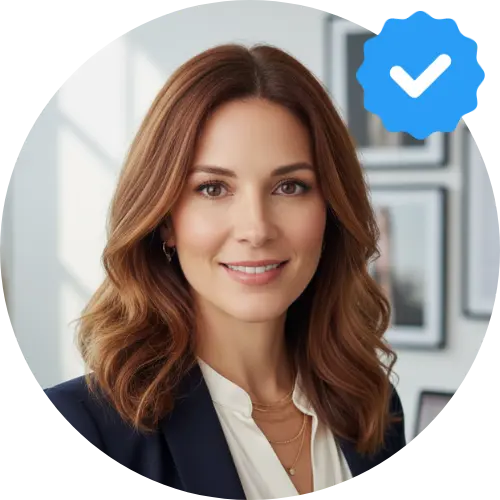Your design portfolio is basically your professional dating profile - and honey, some of y'all are accidentally swiping left on your dream jobs 😅 I've seen countless talented designers torpedo their chances with portfolios that scream "amateur hour" when their actual work is fire. Let's fix that mess, shall we?
After reviewing hundreds of design portfolios (and cringing through way too many), I've spotted the same soul-crushing mistakes over and over. The thing is, most design schools don't actually teach you how to present your work - they just assume you'll figure it out. Spoiler alert: most people don't.
The Portfolio Graveyard: Why First Impressions Matter
Here's the brutal truth - recruiters spend about 7 seconds scanning your portfolio before deciding if you're worth their time. Seven. Seconds. That's barely enough time to read this sentence, let alone appreciate your artistic genius.
I learned this the hard way when my first portfolio got exactly zero responses. Zero! I thought my work spoke for itself, but turns out it was speaking the wrong language entirely. Your portfolio isn't just a collection of pretty pictures - it's a strategic weapon designed to land you interviews.
Blunder #1: The "Everything and the Kitchen Sink" Approach
Ngl, this is the biggest rookie mistake I see. You know that project from freshman year where you designed a logo for your friend's dog-walking business? Yeah, that doesn't belong next to your senior thesis on sustainable packaging design.
Quality beats quantity every single time. I'd rather see 8-10 killer pieces that showcase your range than 25 mediocre projects that make me question your judgment. Think of it like a greatest hits album - you want people humming your best songs, not skipping through filler tracks.
The sweet spot? About 12-15 pieces max. Each one should make someone go "damn, I need to hire this person." If a piece doesn't spark that reaction, it's taking up valuable real estate.
Blunder #2: Playing Hide and Seek with Your Process
Listen, we don't just want to see your final masterpiece - we want the behind-the-scenes documentary. Show us your sketches, your iterations, your "aha!" moments. This is where you prove you're not just someone who makes things look pretty, but someone who thinks about design.
I used to think showing rough sketches made me look unprofessional. Wrong! Those messy thumbnails and crossed-out ideas actually demonstrate your problem-solving skills. Employers want to see how your brain works, not just what comes out of it.
Include 2-3 detailed case studies that walk through your entire process. Start with the brief, show your research, display your iterations, and explain your final decisions. Make it a story people want to follow.
Blunder #3: The Mystery Portfolio (aka Zero Context)
You know what's worse than bad design? Good design with no explanation. I've seen gorgeous portfolios where I had absolutely no clue what I was looking at or why it mattered.
Every project needs context. What was the problem? Who was the client? What constraints did you work within? What was your role if it was a team project? Don't make people guess - spell it out.
A simple formula that works: Problem + Process + Solution + Results. Boom. That's your project description right there.
Blunder #4: Technical Disasters That Scream Amateur
Btw, nothing kills your credibility faster than a portfolio that looks like it was built in 2003. I'm talking pixelated images, broken links, wonky mobile formatting, and loading times that make people give up and order coffee while they wait.
Your portfolio is a design project itself. If you can't make your own website look professional and function smoothly, why should anyone trust you with theirs?
Invest in good photography or scanning equipment. Your work deserves better than blurry phone pics with weird shadows. And please, for the love of all that's holy, test your site on different devices and browsers.
Blunder #5: Generic Vanilla Personality
Here's where most design school graduates play it way too safe. Your portfolio should have personality - YOUR personality. I'm not saying go full chaos mode, but let people get a sense of who you are as a human being.
Some of my favorite portfolios include little personal touches: a quirky about section, behind-the-scenes photos, or even just the way they write their project descriptions. You want people to think "I'd actually enjoy working with this person."
Your voice should come through in your writing. If you're naturally funny, let that show. If you're more serious and analytical, own that too. Authenticity is magnetic.
Blunder #6: The One-Size-Fits-All Trap
This might blow your mind, but you don't need just one portfolio. Shocking, I know! The work you show for a tech startup should be different from what you show a luxury brand agency.
I'm not saying create completely different portfolios for every application (ain't nobody got time for that), but you should be able to adjust your selection based on the opportunity. Lead with work that's most relevant to what they're looking for.
Pro tip: Create a master collection of all your best work, then curate specific selections for different types of roles. It's like having different outfits for different occasions.
Blunder #7: Forgetting You're Solving Problems, Not Just Making Art
Design school can sometimes make you feel like you're training to be the next Picasso, but most design jobs are about solving business problems. Your portfolio should demonstrate that you understand this fundamental difference.
For every pretty picture, ask yourself: What problem did this solve? How did it help the client or user? What metrics improved because of this design? These are the questions that separate designers from artists.
I've seen portfolios full of gorgeous concept work that had zero connection to real-world applications. That's fine for art school, but not for landing design jobs.
Blunder #8: Contact Information Scavenger Hunt
You'd be amazed how many portfolios make it nearly impossible to actually contact the designer. Your contact info should be visible on every page - not buried in some hard-to-find corner.
Make it ridiculously easy for people to reach you. Email, phone, LinkedIn, whatever - just make sure it's working and you actually check it regularly. I once tried to contact a designer whose email bounced back. Guess who didn't get the job?
Blunder #9: The Perfectionism Paralysis
Imo, this is the sneakiest portfolio killer. You keep tweaking and adjusting and "just fixing one more thing" until years pass and you still don't have a live portfolio. Perfect is the enemy of done, and done is what gets you hired.
Your portfolio will never be perfect, and that's okay! Launch it when it's good enough, then improve it over time. A decent portfolio that exists beats a perfect portfolio that doesn't.
Set a deadline and stick to it. You can always update and improve later - that's what version 2.0 is for.
Blunder #10: Ignoring the Human Behind the Screen
Here's what I wish someone had told me in design school: portfolios aren't just about showcasing your work - they're about building relationships. The person reviewing your portfolio is a human being with their own challenges, preferences, and pet peeves.
Make their job easier. Organize your work logically. Write clear, concise descriptions. Include all the information they need without making them dig for it. Think of your portfolio as a service to them, not just a showcase for you.
Research shows that hiring managers appreciate portfolios that demonstrate empathy and user-centered thinking. Show them you understand their perspective, and they'll be more likely to want to work with you.
Building Your Portfolio Recovery Plan
Okay, so maybe you're reading this and realizing your portfolio has committed a few of these crimes. Don't panic! Every designer's first portfolio is a hot mess - it's like a rite of passage.
Start by auditing what you currently have. Be ruthless about quality over quantity. Then focus on adding context and process documentation to your strongest pieces. Your future self will thank you for taking the time to do this right.
Remember, your portfolio is never really "finished" - it's a living document that grows and evolves with your career. The key is getting something solid out there so you can start landing opportunities and building real-world experience.
Frequently Asked Questions
How many projects should I include in my portfolio?
Quality over quantity, always. Aim for 8-12 strong projects rather than 20+ mediocre ones. Each piece should demonstrate different skills and serve a purpose in your overall narrative.
Should I include work from internships or freelance projects?
Absolutely! Real-world work often carries more weight than class projects. Just be clear about your role and what parts you were responsible for if it was collaborative work.
How often should I update my portfolio?
Tbh, you should review and refresh your portfolio every 3-6 months, or whenever you complete a significant new project. Keep it current and relevant to your career goals.
Is it okay to show concept work alongside client projects?
Yes, but balance is key. Include some concept work to show your creativity and range, but make sure the majority demonstrates your ability to work within real constraints and solve actual problems.
Should my portfolio have a specific style or theme?
Your work should feel cohesive, but don't force an artificial style that doesn't represent your range. Let your natural design sensibilities and problem-solving approach be the unifying thread.
Bottom Line
Your portfolio is your ticket to the design career you actually want - don't let these common mistakes keep you stuck in application purgatory. The good news? Most of these issues are totally fixable with some strategic thinking and honest self-assessment.
Take the time to audit your current portfolio against this list. I guarantee you'll spot at least a few areas for improvement. And hey, that's not a bad thing - it means you're about to level up in a major way! 🚀
Remember, every successful designer started with a cringe-worthy first portfolio. The difference between those who make it and those who don't isn't talent - it's the willingness to learn, adapt, and keep improving. You've got this!




